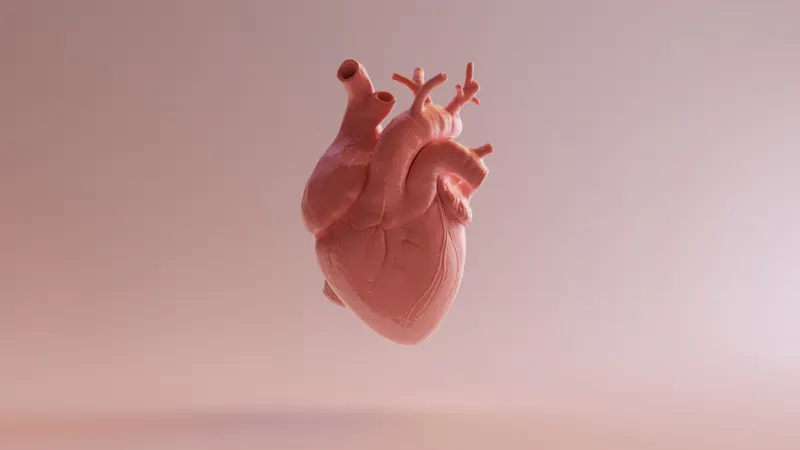Endocarditis
What's covered?



Endocarditis is when your heart’s inner chambers or layers get infected. Having endocarditis might feel like having the flu. Sometimes it’s life-threatening, but there are things you can do at home to prevent getting endocarditis.
What’s endocarditis?
When the inner chambers and valves of your heart get infected by bacteria or fungi, it’s known as infective endocarditis. It’s rare, but sometimes life-threatening. You’re more likely to develop endocarditis if you’ve had certain heart conditions or surgeries before.
Endocarditis symptoms
Endocarditis symptoms are often similar to flu symptoms, like:
- a high temperature
- headache
- chills
- achy joints and muscles
- pale skin
- unexplained weight loss
Sometimes, your symptoms might be difficult to notice and appear slowly (subacute endocarditis). Or they might appear suddenly (acute endocarditis).
Other symptoms include:
- small, red or purple spots on your skin
- thin reddish brown lines on your fingernails
- painful red lumps on your fingers and toes
- painless red spots on your palms and soles
If you have endocarditis symptoms, it’s important to see a GP. That’s because endocarditis might cause serious health problems, like:
- heart failure — when your heart can’t pump blood around your body as it should
- stroke — a life-threatening condition when blood can’t reach your brain
Find out more about heart health.
What causes endocarditis?
Normally, bacteria passes through your bloodstream without causing any issues because it’s killed by your immune system. But sometimes the bacteria survives, and this is what can cause an infection.
The bacteria can settle on your heart valves, or the inner lining of your heart (endocardium). This might cause inflammation of your heart, or clumps of bacteria might form where it’s infected the valves.
Infections in this part of the heart are difficult for your immune system to clear, and sometimes fragments of bacteria clumps can break off and spread to other parts of your body. This can cause serious health problems.
You’re more likely to develop endocarditis if you’ve had certain heart conditions or surgeries, like:
- congenital heart disease — a heart condition you’re born with
- hypertrophic cardiomyopathy — the walls of your heart’s chambers have thickened
- damaged heart valves — caused by a previous infection or heart disease
- artificial heart valves — you’ve had a damaged valve replaced previously
Other risk factors include:
- health conditions that weaken your immune system — like AIDS
- if you inject street drugs with dirty needles
How is endocarditis diagnosed?
If you have endocarditis symptoms, you should see a GP. They might recommend you have tests to help diagnose the problem, like:
- blood tests — to check for signs of infection like bacteria or levels of inflammation
- an electrocardiogram (ECG) — an electrical recording of your heart’s rhythm
- an echocardiogram (echo) — an ultrasound scan of your heart and its valves
- an x-ray — of your heart and lungs
- an MRI scan — using magnetic and radio waves to make detailed images of your heart
Can endocarditis be treated?
Endocarditis treatment depends on certain factors, like whether you have an existing heart problem and how old you are.
You might go to hospital and be given antibiotics through a drip in your arm. The course of antibiotics can be between 2-4 weeks long, but is sometimes longer. If you improve, you’ll be able to go home. After this you’ll need to:
- keep taking antibiotics — for up to 6 weeks
- have blood tests — to find out more about the infection and how well your body’s fighting it
- have regular check ups — to make sure you’re recovering properly
If tests show that your endocarditis was caused by a fungal infection, they might also give you an antifungal medicine.
If some of your heart was damaged by the infection, you might also need surgery, like:
- draining excess pus from your heart — if pockets of pus (abscesses) developed during the infection
- repairing a heart valve — if it was damaged by the infection
- replacing a heart valve — with an artificial (prosthetic) valve
Can endocarditis be prevented?
If you’re at risk of endocarditis, there are things you can do to reduce your risk.
Keeping your skin clean prevents bacteria or fungi entering your bloodstream, like:
- washing your skin regularly — using antibacterial soap
- washing cuts and grazes as soon as possible — to prevent them getting infected
- avoiding getting body piercings or tattoos — or any cosmetic procedure that breaks the skin
It’s important to care for your teeth too, like:
- visiting your dentist regularly — it’s a good idea to tell your dentist you have a heart condition
- brushing your teeth twice a day — with fluoride toothpaste
- flossing between your teeth — at least once a day
- changing your toothbrush every few months — or when the bristles start to bend
- letting your toothbrush air dry after using it — to reduce bacteria developing
You should see a dentist as soon as possible if you have signs of an infection, like:
- an intense throbbing pain in your tooth or gum
- gums that are red, swollen, and bleed
Cahill, T. J., Baddour, L. M., Habib, G., Hoen, B., Salaun, E., Pettersson, G. B., ... & Prendergast, B. D. (2017). Challenges in infective endocarditis. Journal of the american college of cardiology, 69(3), 325-344.
Habib, G., (France), Badano, L., (Italy), Tribouilloy, C., (France), ... & European Association of Echocardiography. (2010). Recommendations for the practice of echocardiography in infective endocarditis. European Journal of Echocardiography, 11(2), 202-219.
Hubers, S. A., DeSimone, D. C., Gersh, B. J., & Anavekar, N. S. (2020, May). Infective endocarditis: a contemporary review. In Mayo Clinic Proceedings (Vol. 95, No. 5, pp. 982-997). Elsevier.
Pierce, D., Calkins, B. C., & Thornton, K. (2012). Infectious endocarditis: diagnosis and treatment. American family physician, 85(10), 981-986.
Prendergast, B. D., & Tornos, P. (2010). Surgery for infective endocarditis: who and when?. Circulation, 121(9), 1141-1152.
Tuarez, F. J. R., Yelamanchili, V. S., & Law, M. A. (2021). Cardiac Abscess. In StatPearls [Internet]. StatPearls Publishing.